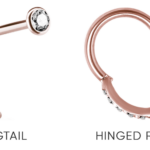Best Way To Start Locs With Short Hair
1. Assess your hair condition: Determine if your hair is healthy enough to start locs. If it’s damaged or brittle, consider waiting until it’s in better condition.
2. Research different loc styles: Understand the various types of locs, such as traditional locs, sisterlocks, or interlocks, to decide which one suits your preference and hair type.
3. Consult with a professional loctician: Schedule a consultation with an experienced loctician who can provide guidance tailored to your hair texture and desired style.
4. Wash and condition your hair: Start with clean, freshly washed hair to remove any build-up or residue. Deep condition and moisturize to ensure your hair is well-nourished.
5. Determine your parting method: Decide whether you want your locs to be evenly parted, randomly parted, or sectioned in a specific pattern. Use small rubber bands or clips to section your hair accordingly.
6. Use a dreadlock starter product: Apply a loc-starter product that helps encourage the formation of locs. This can vary depending on your hair type, but some commonly used products include twisting gels, locking creams, or natural oil blends.
7. Begin palm rolling or twisting method: Start with the section closest to your nape and divide it into subsections. Take each section and either palm roll or two-strand twist it tightly from the root to the end.
8. Secure the ends: As you reach the end of each loc, secure it with a small rubber band or wrap it with a coil of wire to keep it intact while it matures.
9. Maintain regular retightening sessions: Schedule regular appointments, preferably every 4-6 weeks, with your loctician to retighten your locs, ensuring they are neat and secure.
10. Be patient: Understand that it takes time for your hair to fully loc. Avoid trying to force or rush the process, as it can lead to damage or weak loc formation.
11. Keep your locs clean: Wash your locs regularly with a residue-free shampoo to prevent buildup and maintain healthy locs.
12. Take care of your scalp: Maintain a clean and healthy scalp by regularly cleansing and moisturizing it. Avoid excessive scratching or manipulation.
13. Protect your locs at night: Sleep with a satin or silk scarf or use a satin pillowcase to minimize friction and prevent frizz.
14. Avoid excessive styling: Minimize the use of heavy gels, waxes, or excessive manipulation, as they can hinder the locking process or cause build-up.
15. Embrace new growth: As your hair grows, be prepared to embrace the appearance of loose hair near the roots. This is a natural part of the loc journey.
16. Avoid tight hairstyles: Refrain from tight ponytails, buns, or other styles that place excessive tension and stress on your locs, as it can weaken them.
17. Maintain a healthy diet: Eat a balanced diet rich in vitamins, minerals, and proteins to promote hair growth and overall hair health.
18. Stay hydrated: Drink plenty of water to keep your hair and scalp hydrated, which aids in the overall health of your locs.
19. Protect your locs from environmental damage: Wear a hat or wrap your locs when exposed to extreme sunlight, chlorinated water, or harsh weather conditions.
20. Regularly separate the roots: As your locs mature, it’s important to separate any matted or fused sections at the roots to avoid congos or larger loc formations.
21. Be gentle when washing and drying: Avoid vigorously rubbing your locs when washing or drying. Instead, gently squeeze out excess water with a towel and allow your locs to air dry or use a cool blow dryer.
22. Avoid high heat styling tools: Minimize using heated styling tools like flat irons or curling irons on your locs, as excessive heat can cause damage.
23. Incorporate essential oils: Use natural oils like jojoba, coconut, or argan oil to moisturize your scalp and locs, promoting a healthy environment for growth.
24. Practice regular scalp massages: Massage your scalp regularly to stimulate blood circulation, which aids in hair growth and overall scalp health.
25. Trim loose or weak ends: If you notice any weak or thin ends, consider trimming them to maintain the overall strength and integrity of your locs.
26. Keep your locs hydrated: Spritz your locs lightly with a water-based moisturizing spray daily or as needed to keep them hydrated and prevent dryness.
27. Avoid overwashing: While regular washing is essential, avoid washing your locs too frequently, as it can lead to dryness and breakage.
28. Embrace the journey: Understand that your locs will change and evolve over time. Embrace the beauty of the process and the uniqueness of your locs.
29. Seek inspiration and support: Connect with others who have locs for advice, inspiration, and support. Join loc communities, forums, or social media groups focused on natural hair.
30. Enjoy the transformation: Embrace the journey and enjoy watching your locs grow and mature into a unique and beautiful hairstyle that reflects your personal style and individuality.
More About Best Way To Start Locs With Short Hair
Welcome to the world of locs! Whether you have decided to embrace your natural hair journey or simply want a new and unique hairstyle, starting locs with short hair can be an exciting and transformative process. In this article, we will explore the best way to begin your locs journey, providing you with tips and insights to ensure a successful start.
One of the first things to consider when starting locs with short hair is the method that best suits you. There are various techniques to begin locs, including the comb coil method, two-strand twist method, interloc method, and freeform method. Each method has its own advantages and considerations, so it is essential to choose one that aligns with your desired outcome and personal preferences.
The comb coil method, for instance, involves using a small comb to create tight coils from the root to the tip of your hair. This method is particularly suitable for those with short hair, as it provides a solid foundation for the locs to form and helps them to mature more quickly. On the other hand, if you prefer a looser and more natural look, the two-strand twist method might be the best choice. This technique involves dividing your hair into small sections and twisting them in a clockwise or counterclockwise direction until they lock.
Once you have selected the method to start your locs, it’s important to maintain a consistent regimen to nurture their growth and overall health. Regular cleansing is vital to prevent buildup and maintain a clean scalp, especially during the early stages. Consider using a residue-free shampoo or a natural concoction to cleanse your hair, ensuring that it does not strip away essential oils or hinder the locking process.
While it may be tempting to style your locs immediately, it is advised to avoid manipulating your hair excessively during the initial stage. Resist the urge to retwist or interlock your locs too frequently, as this can disrupt the locking process and lead to weak, fragile locs. Instead, focus on keeping your scalp moisturized with natural oils or aloe vera to promote healthy hair growth. Additionally, incorporating a balanced diet rich in vitamins and minerals will contribute to overall hair health and accelerate the locs’ formation.
Starting locs with short hair requires patience, as the locking process typically takes time to fully materialize. It is essential to embrace and appreciate each stage of the journey, from the budding phase to the mature locs. Your hair will gradually transform and develop its unique characteristics, reflecting your style and personality.
To maintain a positive mindset and gain inspiration, consider seeking support from online communities and connecting with other individuals who are also starting their locs journey. They can provide guidance, share their experiences, and offer valuable tips to overcome any challenges encountered along the way.
In conclusion, embarking on the journey to start locs with short hair is an empowering and gratifying experience. By selecting the method that aligns with your hair type and preferences, establishing a consistent maintenance routine, and maintaining a patient and positive mindset, you will cultivate beautiful and healthy locs. Embrace the journey and enjoy watching your short hair transform into stunning, well-established locs that will be an expression of your unique self.
Best Way To Start Locs With Short Hair FAQs:
1. Q: Can I start locs with short hair?
A: Yes, it is possible to start locs with short hair. However, it may take longer for the locs to form and mature compared to starting with longer hair.
2. Q: How short can my hair be to start locs?
A: Ideally, your hair should be at least 2-3 inches long to start locs. This length allows the hair to be twisted or matted together to form the beginning stages of locs.
3. Q: Should I comb out my short hair before starting locs?
A: No, you don’t need to comb out your short hair before starting locs. In fact, it’s often easier to start with hair that has not been combed out or straightened.
4. Q: What methods can I use to start locs with short hair?
A: Some common methods for starting locs with short hair include two-strand twists, comb coils, finger coils, braids, or the interlocking method.
5. Q: How often should I wash my hair when starting locs with short hair?
A: It is recommended to wash your hair once a week or every two weeks when starting locs. Avoid excessive washing as it may disrupt the loc-forming process.
6. Q: Can I use products to help my locs form faster?
A: While there are some products marketed to aid in loc formation, it is important to be cautious as certain products may cause build-up or hinder the natural process. Consult with a professional loctician for guidance.
7. Q: How long will it take for my locs to fully form with short hair?
A: The time it takes for locs to fully form varies from person to person. With short hair, it may take approximately 6 months to a year before the locs begin to significantly mature.
8. Q: How should I maintain my short locs?
A: Regular maintenance for short locs may involve palm-rolling, retwisting, or interlocking the new growth periodically to help maintain their shape and neatness.
9. Q: Can I style my short locs while they’re still forming?
A: Yes, you can style your short locs during the formation stage. However, be gentle with your hair to avoid any breakage or pulling which can weaken the developing locs.
10. Q: Do I need to limit my physical activities when starting locs with short hair?
A: While you don’t need to limit your activities entirely, it’s best to avoid excessive sweating or water exposure during the early stages of loc formation. This helps prevent unraveling or delayed maturation.
















